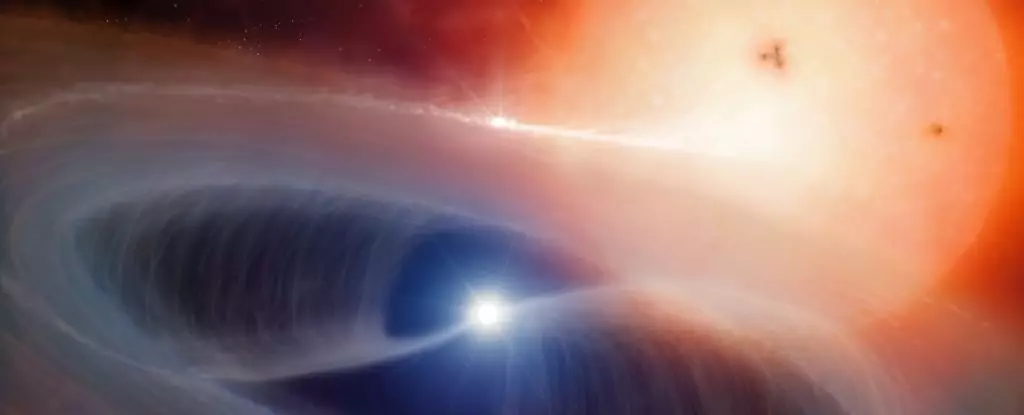The universe is an enigmatic expanse filled with intricate phenomena, many of which remain shrouded in mystery. Among these is one of the most fundamental questions: where do all the metals in the universe originate? While it is widely accepted that metals are birthed in the fiery crucibles of stellar explosions, specifically supernovae, the details behind this process have proven to be more elusive. Recent investigations led by an international team of astronomers challenge long-held assumptions about the progenitors of Type Ic supernovae, revealing a more complex and nuanced understanding of stellar evolution and metal production.
To comprehend the findings regarding Type Ic supernovae, it’s vital to first grasp what these celestial events entail. Unlike their Type II counterparts, Type Ic supernovae are characterized by their lack of hydrogen and helium in the ejected material. This peculiar shortcoming has prompted scientists to ponder the origins of these powerful explosions. Traditionally, it was thought that such explosions originated from massive stars, or “lone wolves,” whose great mass allowed them to shed lighter elements before they reached the end of their life cycles.
However, the research led by Martín Solar and Michał Michałowski from Adam Mickiewicz University uncovered a surprising revelation: many progenitors of Type Ic supernovae are not the overwhelmingly massive stars scientists initially believed. Instead, they often consist of less massive stars that reside in binary systems. The influence of a companion star may play a critical role in shaping the final stages of these stars’ lives and their ultimate explosions.
The Evolution of Massive Stars
At the heart of this discovery is an intricate understanding of stellar life cycles. Massive stars undergo a series of transformations, fusing lighter elements into heavier ones until they reach a critical point where fusion can no longer sustain the gravitational forces at play. In these moments, the star’s core collapses, leading to a cataclysmic explosion. This collapse occurs after the fusion processes have consumed hydrogen and helium, resulting in a core predominantly composed of heavy elements.
What the researchers have highlighted is that the fate of these massive stars is influenced not only by their mass but also by their chemical composition and the presence of a companion star. The binary companion can siphon off significant amounts of hydrogen and helium from the more massive star, leading to a depletion of these elements before the supernova event. This process serves as a key factor in explaining the absence of hydrogen and helium in the remnants of the explosion.
To substantiate their theories, Solar and Michałowski utilized observational data from the PHANGS (Physics at High Angular resolution in Nearby GalaxieS) project. This ambitious initiative employed cutting-edge technology, such as the Atacama Large Millimeter Array, to scrutinize individual gas clouds where star formation transpires. By comparing the characteristics of gas clouds left in the wake of Type Ic supernovae to those from other types, such as Type II, the team gathered invaluable clues about the progenitor stars’ masses.
The analysis revealed a remarkable finding: the molecular gas abundance at supernova sites varied significantly between the two supernova types. The presence of substantial hydrogen in two distinct supernova remnants indicated that Type Ic progenitors were indeed less massive than previously thought, diverging from the notion of them being solely giant stars. Through this analytic lens, an intricate picture of cosmic evolution began to unfold, highlighting not just the explosion itself but the life leading up to it.
The Implications of Binary Star Systems
One of the most tantalizing implications of the research is the vital role of binary star systems in the lifecycle of massive stars. The binary companion, which often survives the cataclysmic event, experiences a transmission of stellar material and energy that can significantly influence its own evolution. This dynamic leads to a higher yield of metals, particularly carbon—an essential building block of life. The observation that supernovae involving binary companions produce greater quantities of carbon offers a rich avenue for re-evaluating how we understand cosmic abundance and distribution of elements throughout the universe.
The findings of Solar and Michałowski’s team open intriguing pathways for future research. By extending their investigations to explore a larger number of supernova remnants and binary systems, scientists may unlock even deeper insights into the complexities of stellar evolution. There remains a wealth of questions unanswered, such as the impact of local cosmic environments on star formation and the unique properties of different supernova events.
As astronomers piece together the cosmic puzzle of metal origins, they continue to forge a greater understanding of the universe’s history and its transformation over billions of years. The interplay between massive stars and their companions represents not just a fascinating aspect of astrophysics but also a profound connection to the elements that comprise the very fabric of life as we know it.


Leave a Reply